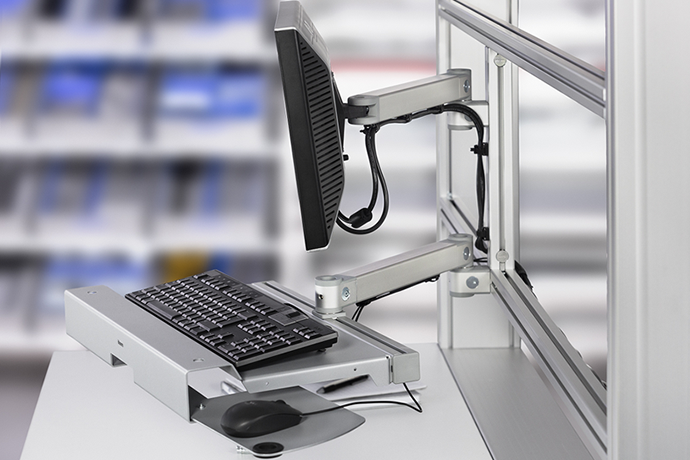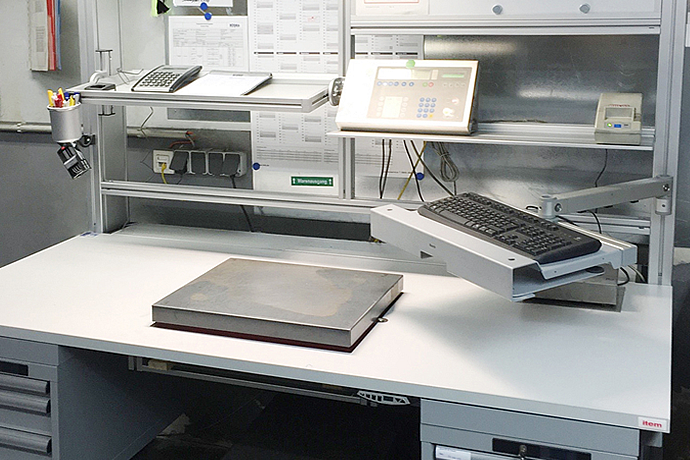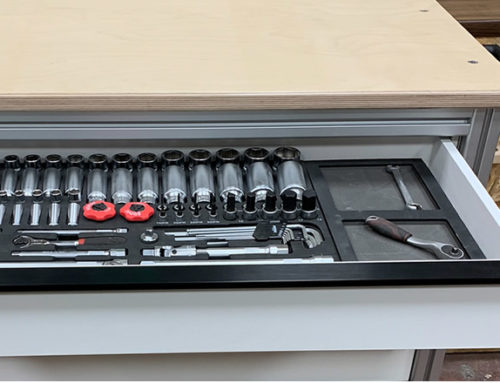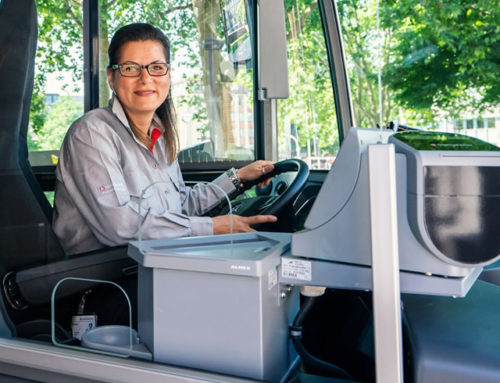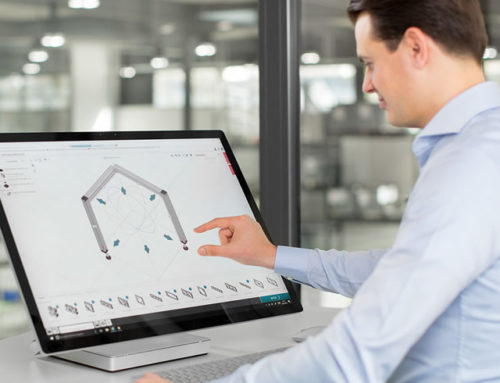The methods and tools of lean production have been a popular topic on our item blog for quite a while now. They show us how successful process optimisation can be implemented in production. Not only that, concepts such as CIP or the PDCA cycle can be highly useful outside the factory environment, too – just as lean management has proven. Our colleague Thomas Hytzki is the go-to man for any theoretical and practical questions about the lean methodology. Readers who are new to lean production are sure to find our interview with him an eye-opening experience.
Lean production – a fascinating challenge
How did you first come into contact with lean production? What aspect of it interests you the most?
During my time as a mechanical engineering student at TU Dortmund University, I attended a very interesting lecture called “Work and Production Systems” where Professor Jochen Deuse explained the topic of production systems in a very vivid, practical manner. As I began to learn more from him about the principles, methods and tools of lean production at Toyota, I thought to myself that’s exactly how all modern-day production companies should be.
But what interests me the most is the fact that, despite having over ten years of experience with the lean philosophy, I am still learning something new every day and can therefore continuously expand my knowledge. And that’s something I really enjoy. It’s pretty much the same situation with the lean philosophy itself. Lean approaches are all about continuously improving. You could say that my personality and the basic principle of lean production have a lot in common.
How would you describe the status of lean production right now? What milestones have been achieved thus far? Where is there still room for improvement?
At the beginning, people saw lean production as a kind of toolbox made up of different principles, methods and tools such as Kanban, SMED (Single Minute Exchange of Dies) and Heijunka (levelling and smoothing). Studies, the experiences of various companies and my own practical experience have since shown, however, that although applying a lean toolbox leverages potential in the short term, it doesn’t bring about sustainable success from a long-term perspective.
Nowadays, we know that simply applying lean tools is by no means enough. You have to understand the underlying philosophy. Numerous lean tools are designed to reveal problems in production, but failure to actively tackle such problems results, amongst other things, in reduced productivity. At this stage, companies often just decide lean production isn’t working for them and give up. They are overwhelmed by the problems they face or would prefer to “have no problems at all”.
One-piece-flow alone isn’t enough
Can you give us an example?
Companies that take a superficial approach to lean production often hear about the one-piece-flow method and its advantages – short throughput times, smaller inventories and less space needed. Whilst all of that is true, the transfer batch size in one-piece-flow – in contrast to batch production – is reduced to one piece, making the process chain highly susceptible to errors that ultimately lead to stations being blocked or running out.
If companies don’t come up with a long-term strategy to deal with such emerging problems, they are sure to see a drop in productivity. Toyota is a role model in this respect. Thanks to the PDCA cycle, small-scale and repeated experimentation directly at shop-floor level and collaboration between managers and workers across hierarchies, the company has come to view errors and problems as “treasures”. These issues are then resolved by adopting a collaborative and, above all, targeted approach.
To make this possible, Toyota of course provides the relevant resources, which has enabled the company to continuously improve and move in the right direction for decades. And at the heart of it all, that’s what makes the company so successful.
Where are other companies that don’t achieve the same results going wrong?
Less successful companies simply introduce one-piece-flow. They don’t actively devise solutions to problems or suggestions for improvement and are then quickly confused as to why they aren’t reaping the rewards they had hoped for. I think there’s a lot of room for improvement in many companies when it comes to trust-based, focused problem-solving collaboration. After all, this is really about a cultural change (seeing mistakes as opportunities instead of risks), rather than rolling out lean principles, methods and tools.
Such a cultural change can only be achieved with a long-term approach and the full participation of all staff, particularly managers – starting right from the top. It’s easy to see how the efforts of companies that want to roll out “lean” quickly and half-heartedly – perhaps because they’ve hit a financial crisis – are doomed to failure.
The choice of material is decisive for lean production
What role does the right material play in process optimisation?
At the heart of everything is the lean philosophy – and therefore people. That’s why all companies should give their people the best possible support as they seek to continuously improve their work. This will enable employees to respond to constantly changing customer demands in the best and most flexible way they can.
In this respect, systems that can be quickly and pragmatically adapted at any time without much hassle can be a great help, which is often what makes lean production building kit systems stand out from other, more complex profile building kit systems. When it comes to automation, I’m a strong believer in low-cost automation. This is where smart, cost-effective and flexible systems are deployed to relieve employees of strenuous, unproductive activities such as handling containers, thus allowing them to concentrate on value-adding tasks.
Industry 4.0 and process optimisation in production
What do you think of lean production and Industry 4.0 coming together? Are they a good match and, if so, is “Lean 4.0” the logical outcome?
I associate Industry 4.0 very much with process automation. How else are approaches such as cloud computing, the Internet of Things and the use of sensor and robot technology supposed to take off? And when I think of automation, I personally believe it could come into, at least a minor, conflict with the future role of human workers in production. According to Industry 4.0 approaches, humans are supposed to become the conductors of the value-added chain and therefore no longer play an active part in the orchestra.
I believe, however, that it is precisely the active role of human workers – when they assemble flexible components at a manual work bench and actively and continuously improve their bench and its surroundings, for example – that is key to creating a production system that can meet the demands of the future.
After all, humans possess skills that machines cannot easily replicate, right?
Precisely. We now know that the markets are tending towards ever-decreasing batch sizes, more variants and short delivery times. And this is exactly where – in my opinion – automated solutions are no match for the flexibility of a manual work bench, at least not in terms of practicality. It is safe to assume that automation tends to cost a lot more than a manual work bench. But the most important aspect is the human ability to think about and continuously improve processes, which is something a machine is not able to do – at least not yet.
It might seem as if I’m not a fan of automation. I assure you that’s not the case. In fact, automation is useful in all situations where it can give workers a helping hand in their highly flexible working practices, take some of the strain and allow them to focus on value-adding tasks. But, where possible, it needs to be intelligent, inexpensive and, most importantly, flexible.
Are you interested in fascinating reports and innovations from the world of lean production? Then we have the perfect solution for you – simply subscribe to the item blog by completing the box at the top right!
